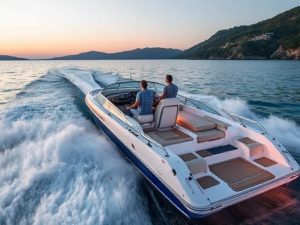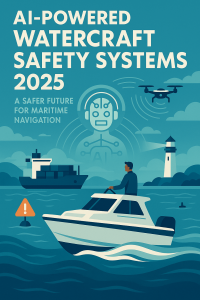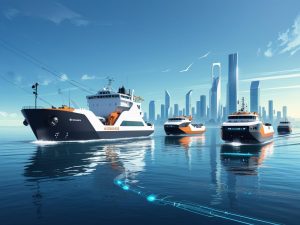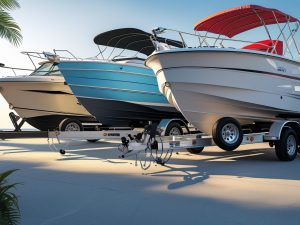The marine industry is undergoing a revolutionary transformation in 2025. With growing concerns over climate change, increasing fuel prices, and stricter environmental regulations, solar-powered boats and watercraft have gained significant attention. These eco-friendly vessels offer an innovative solution that combines sustainability with performance, making them an attractive option for both recreational and commercial use.
In this comprehensive guide, we explore the best solar-powered boats and watercraft in 2025, how the technology works, its benefits, limitations, and the future outlook of the solar marine industry.
1. What Are Solar-Powered Boats?
Solar-powered boats are marine vessels that use solar panels to capture energy from the sun. This energy is then converted into electrical power, which propels the boat via electric motors. These boats can range from small one-person kayaks to luxurious multi-deck yachts.
The solar power system typically includes:
-
Photovoltaic (PV) panels
-
Lithium-ion or other high-capacity batteries
-
Inverters and controllers
-
Electric motors or hybrid propulsion systems
2. How Solar Boat Engines Work
The operation of a solar-powered marine engine involves several steps:
-
Solar Panels Absorb Sunlight: Photovoltaic cells mounted on the deck or canopy convert sunlight into DC electricity.
-
Energy Storage: This electricity is stored in marine-grade batteries.
-
Power Distribution: A power controller manages how the stored energy is used.
-
Propulsion: The stored electricity powers an electric motor, driving the propeller or jet system.
Some vessels use hybrid systems, combining solar with diesel or wind to maximize range and performance.
3. Top Solar-Powered Boats and Watercraft in 2025
A. Solar Yachts
1. Silent 80 Tri-Deck (Silent-Yachts)
-
Range: Unlimited under sun
-
Speed: 18 knots (max)
-
Features: 80 solar panels, 250 kWh battery pack, luxury interiors
-
Price: Starts at $7 million
2. Sunreef 80 Eco
-
Sustainable luxury
-
Integrated solar skin
-
Regenerative sailing system
B. Solar Catamarans
1. Soel Senses 62
-
Eco-friendly catamaran for charters
-
Self-sustaining system with solar roof
-
Sleeps 8–10 guests comfortably
2. Aquanima 40
-
100% solar-electric
-
Unlimited range in sunny conditions
-
Designed for remote cruising
C. Solar Fishing Boats
1. Torqeedo SolarFishing 25
-
Ideal for lake or inshore fishing
-
Built-in solar panels and lithium battery
-
Portable and affordable (~$50,000)
2. SolarSkiff X-21
-
Small but efficient
-
Can operate all day on sunlight
-
Minimal maintenance
D. Personal Solar Watercraft
1. SeaZen Solar-Powered Boat
-
Compact, modern design
-
Ideal for day rentals or solo boating
-
Cruise speed: 5 knots
2. Solar Jet Kayak
-
Combines kayaking with solar propulsion
-
Lightweight and portable
-
Suitable for eco-tourism
4. Advantages of Solar-Powered Marine Vessels
-
Environmentally Friendly
No CO₂ emissions, oil spills, or noise pollution. -
Lower Operating Costs
No fuel costs and minimal engine maintenance. -
Quiet Operation
Perfect for fishing, wildlife tours, or relaxing cruises. -
Energy Independence
Ideal for off-grid boating, especially in sunny regions. -
Government Incentives
Many governments offer tax rebates or subsidies in 2025.
5. Challenges and Limitations
-
Initial Cost
The upfront cost of solar boats can be high, especially for yachts. -
Weather Dependency
Overcast or rainy days can reduce energy generation. -
Speed and Range Limitations
Solar boats are often slower compared to diesel counterparts. -
Space Constraints
Requires enough surface area for solar panels, limiting design options. -
Battery Degradation
Long-term battery replacement can be expensive.
6. Solar Power vs. Electric and Diesel Engines
| Feature | Solar-Powered Boats | Electric Boats | Diesel Boats |
|---|---|---|---|
| Fuel Cost | $0 | Electricity required | High |
| Emissions | None | None | High |
| Speed | Moderate | High | Very High |
| Maintenance | Low | Medium | High |
| Range (per charge) | Variable (sunlight) | Fixed (battery) | Long |
| Environmental Impact | Very Low | Low | High |
7. Cost Analysis: Are Solar Boats Worth It?
Initial Investment
| Boat Type | Approx. Price (USD) |
|---|---|
| Solar Kayak | $2,000 – $5,000 |
| Fishing Boat | $20,000 – $50,000 |
| Catamaran | $250,000 – $500,000 |
| Luxury Yacht | $2M – $10M+ |
Long-Term Savings
Solar boats eliminate fuel costs and reduce servicing requirements, potentially saving tens of thousands over 10 years. Battery replacement, however, may be required after 8–10 years.
8. Government Incentives and Regulations in 2025
As of 2025, many countries encourage green marine technology:
-
USA: Offers a federal clean energy boat tax credit (up to 26%)
-
EU: Emissions-based registration fees reduced for zero-emission vessels
-
Australia & New Zealand: Rebates and grants for solar-powered marine startups
-
Canada: Subsidies for electrifying commercial marine fleets
9. The Future of Solar Marine Technology
Solar-powered marine technology is expected to experience:
-
Better Battery Tech: Graphene and solid-state batteries in development.
-
Smart Navigation: AI-driven autopilot systems for energy efficiency.
-
Integrated Wind + Solar: Hybrid systems using wind turbines on decks.
-
Wider Adoption in Commercial Use: Ferry systems, cargo boats, and patrol boats adopting solar-electric systems.
-
Lower Costs: Mass production is driving down hardware prices.
10. Frequently Asked Questions (FAQs)
Q1: Can solar-powered boats run at night?
Yes, solar boats store energy in batteries during the day, allowing them to operate at night or during cloudy conditions.
Q2: How long do solar marine batteries last?
Most high-end marine batteries last 8 to 10 years, depending on usage and maintenance.
Q3: Are solar-powered boats legal everywhere?
Yes, but you must still register your boat and comply with local maritime laws, just like any other watercraft.
Q4: Can I convert my existing boat into a solar-powered boat?
Yes. Many companies offer retrofit kits to convert small and mid-sized boats to solar-electric propulsion.
Q5: How fast can solar-powered boats go?
Most solar boats cruise at 4–10 knots, though high-performance solar yachts can reach up to 20 knots.
Q6: Are there solar-powered jet skis?
While still emerging, personal solar watercraft and solar-powered jetboards are gaining popularity in 2025.
Q7: What is the lifespan of solar panels on boats?
Marine-grade solar panels can last 20 to 25 years, with performance degradation under 1% per year.
Q8: Do solar boats work in cloudy regions?
Yes, although with reduced efficiency. Most boats are equipped with battery backups to compensate.
11. Conclusion
The year 2025 marks a pivotal shift in the marine industry as solar-powered boats and watercraft become more accessible, efficient, and desirable. From eco-conscious individuals to luxury yacht owners, people are embracing solar marine technology for its environmental benefits, cost savings, and modern appeal.
While challenges such as high initial costs and weather dependency still exist, technological advancements, global awareness, and government support are helping solar marine solutions sail into the mainstream.
Whether you’re considering a solar kayak for your next lake adventure or investing in a luxury solar yacht, solar-powered engines are redefining boating in 2025—one sunbeam at a time.





